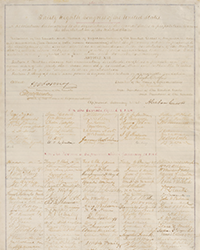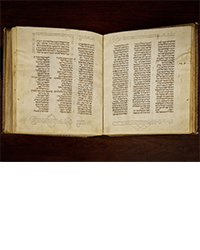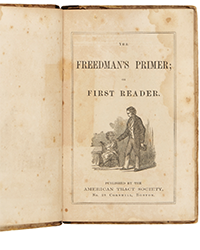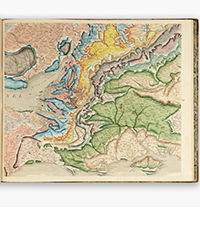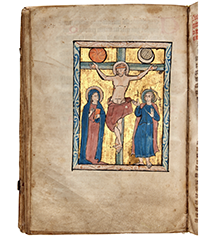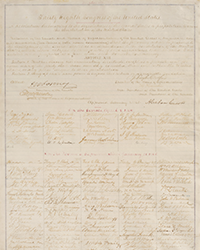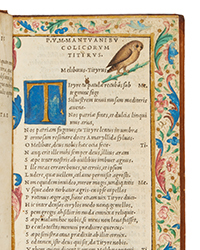David M. Lesser Fine Antiquarian Books has issued their Catalogue 207 of Rare Americana. Their catalogues and format look the same as their predecessors. What changes is the material inside. This month we have a new selection of items from the 18th to early 20th century that will appeal to collectors of Americana. Here are a few samples.
There aren't many cities where guidebooks such as this one were printed but New Orleans is special. The morality rules aren't quite so strict there. Item 94 is a New Orleans Blue Book, aka A Directory and Guide for the Sporting District...the only district of its kind in the States for the fast women by the law.” The fast women in the Sporting District were not track athletes. They were there to keep the men happy... for a price. If you remembered her name, they are listed alphabetically. If you were color-conscious, they were described as “white,” “octoroons,” and “colored.” Cabarets are also listed. These guides must have been popular as they had lots advertisers, “sporting” such products as liquor, restaurants, pharmaceuticals, cigars, taxis, Turkish baths, candy, hotels, and even an attorney if this all got you in trouble. Why such men would have need for a piano tuner is a bit hard to understand. An out of tune, “honky tonk” piano sound would have been desirable anyway. The red light district in New Orleans was known as “Storyville,” not because of the stories it told but because the area was set aside for such activities by Alderman Sidney Story. It operated as such from 1897-1917 when the city shut it down. The guide was created by Billy Struve, a saloon manager. Priced at $4,500.
Speaking of the Big Easy, the second battle of New Orleans wasn't much of a fight. In 1862, the lesser battle came from Union boats running past the outlying forts and racing upriver to the city. There was little further resistance. General Benjamin Butler seized the city and issued an announcement of how it was going to be – Proclamation. Headquarters Department of the Gulf, New Orleans May 1, 1862. “Thrice before has the City of New Orleans, been rescued from the hand of a foreign government, and still more calamitous domestic insurrection, by the money and arms of the United States. It has of late been under the military control of the rebel forces, claiming to be the peculiar friends of its citizens...” The Union was here to rescue the citizens of New Orleans, whether they liked it or not. Those in rebellion against the United States had to surrender, along with their arms and munitions of war. If they did, they would not be harmed. If they remained loyal to the Confederacy, they would be treated as enemies. No flags could be flown other than that of the U.S. Essentially, if people went about their business as before, and caused the Union soldiers no harm by the words of actions, they could return to their normal lives. Item 8. $3,750.
American settlers have never quite known what to do with its pesky native “Indians” once they took their land away. Where do we put them? James Taylor (not the musician) had an idea which he described in his book The Sioux War: What Shall We Do with It? The Sioux Indians: What Shall We Do with Them? It was published in 1862, when the Indians were still a force, a decade and a half before Custer's last stand. Anderson Galleries in 1922 described the book as “arranged under nine separate heads, dealing with the various phases of the subject, covering the needs of a vigorous offensive campaign against the savages; the number and situation of the enemy; their depredations along the Overland Routes; the Gold Discoveries in the Dakota and Washington Territories; the Northern Pacific Railroad; and finally, a Petition to the General Government demanding that the rights of American citizens be respected on the Plains, and that to this end, the Sioux Nation, ranging over the whole region from Lake Superior to the Black Hills, be CRUSHED BY ARMS.” Taylor's answer as to what to with the Indians after they had been crushed was to move them all to Isle Royale in Lake Superior. They could farm and fish for a living. It was to be something like a penal colony. That would get them out of the way, and if they tried to get off the island, they would be closer to Canada anyway. There would be room for the 46,880 Indians because Isle Royale is a large island, 207,360 acres. What they would be giving up would contain a mere 9,000,000 acres. Lakefront property is more valuable. Item 99. $2,000.
There was a time when congressmen with some sort of personal differences, rather than debating and blabbing about it, did the manly thing, they engaged in a duel. In 1838, Kentucky Congressman William Graves approached Maine Congressman Jonathan Cilley with a letter from New York World publisher James Webb. Cilley had said on the house floor that Webb had accepted a bribe for changing his editorial position. Cilley refused to accept the letter which Graves took as an insult. The two had evidently been cordial up to this time, but Graves found Cilley's action sufficiently objectionable to challenge him to a duel. In hindsight it seems odd since the dispute was between Cilley and Webb, but nonetheless, Graves and Cilley met on the Blandensburg dueling grounds February 24, 1838. Graves was the more expert marksman, but it took three rounds for a bullet to strike. The victim of this silly dispute was Congressman Cilley. Item 13 is a contemporary manuscript describing this terrible event. It includes two pasted newspaper accounts. The writer says the news reports had it wrong. He said Cilley told him that when Graves asked whether his refusal to accept the letter had anything to do with who was presenting it, he said no, that he just didn't want to be drawn into a controversy with Webb. When Graves asked whether that meant he didn't consider Webb a gentleman, Cilley said he responded that he expressed no opinion about Webb. When Graves said Cilley's refusal to accept the letter might put him in an unpleasant situation, he said he hoped not and could not see why it would. All this makes one think there must have been more to this story between Cilley and Graves, but it is not here revealed. Graves outlived Cilley by ten years. Item 13. $1,250.
This is a signed letter from Caroline Campbell to her brother-in-law, Henry Mason Morfit, dated February 16, 1835. Ms. Campbell was a socialite, writing about her adventures. It gives us a look at the lives of the privileged in 1830s New York. She describes the balls and events of the social season. She notes people she met, such as Mayor Cornelius Lawrence. She takes tea with a member of the venerable Ludlow family. She sings at social gatherings, writes her own compositions, and has many male admirers. She went with a “high military character” but dances all night with others too. The night before, she went out “dressed in my pink satin and my hair Mrs. Hardy arranged very beautifully.” She was the “belle of the room.” You get the drift. Morfit was a lawyer and substantial person. He was sent by Andrew Jackson to scout and report on newly independent Texas. Not much is known about Ms. Campbell's life. Despite all the beaus, she never married, and in later years went to live with her sister Catherine, perhaps after Henry Morfit died. She had no children but should not have been too pressed for interaction with young ones as the Morfits had fifteen or sixteen. I'm not sure which and Henry probably wasn't either. Item 10. $500.
David M. Lesser Fine Antiquarian Books may be reached at 203-389-8111 or dmlesser@lesserbooks.com. Their website is www.lesserbooks.com.


